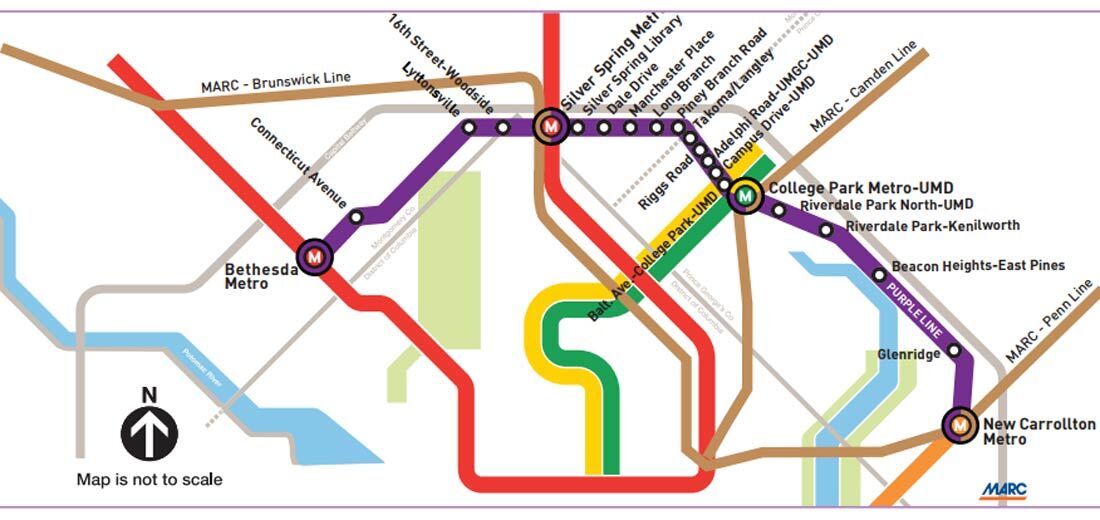Maryland’s Purple Line is not scheduled to open until 2026, but the project is already leading to concerns about gentrification around stations.
A new study from the public-private group “Purple Line Corridor Coalition” focused on ways to potentially avoid that from happening.
“Historically, transit investments of this scale have been transformative for the people and places that surround them, but these transformations have often been at the expense of residents and businesses with less economic and political power,” according to the study.
The Purple Line Corridor Coalition has been working for years to organize around “equitable outcomes” for the Purple Line corridor.

When completed, the 16-mile light-rail line will have 21 stations between New Carrollton and Bethesda, connecting Montgomery and Prince George’s counties.
“It is likely to accelerate the rate of displacement already occurring in the corridor,” researchers said. “Strategies that center the needs of residents and small businesses can help more of them partake in the economic benefits associated with the Purple Line.”
Lower-income households, renters and people of color face a greater risk of displacement from redevelopment and rising rents, according to the study.
Researchers made numerous recommendations, including to “protect existing low-cost housing” in the corridor and to “protect and nurture existing small businesses.”
“Planned improvements to the built environment around Purple Line stations are insufficient to deliver safe access to transit for all corridor residents,” according to the study.
“Achieving the Purple Line’s full potential to address existing inequities and to spur economic development through improved transit access will require strategic and coordinated improvements to pedestrian, bike and bus accessibility.”
The study suggested widening sidewalks in order to make walking more desirable and to address connectivity and accessibility issues.
“Walking immediately adjacent to moving traffic is undesirable and unsafe,” researchers said. “This could reduce someone’s likelihood of wanting to travel by foot, and increase the risk of crash injury or fatality. These conditions also make it even more dangerous for people with disabilities to access transit and essential needs and services.”
The study noted that the line will introduce “new opportunities to many places that currently lack access to rail transit,” but that “these locations are disproportionately home to the Purple Line Corridor’s lowest-income residents.”
According to the study, areas particularly susceptible to gentrification include “Langley Park and greater Riverdale.”








